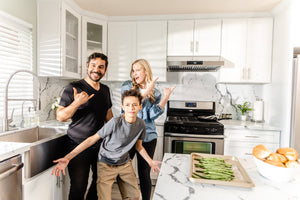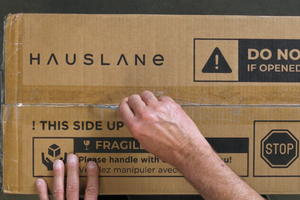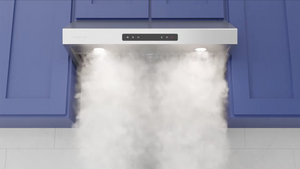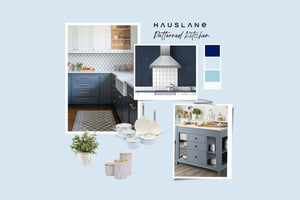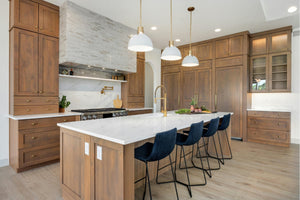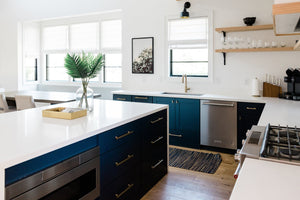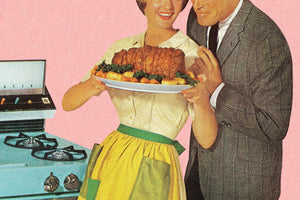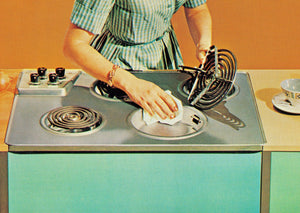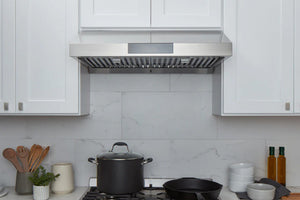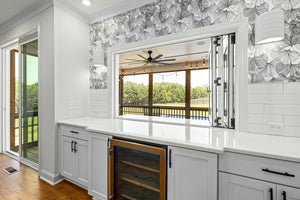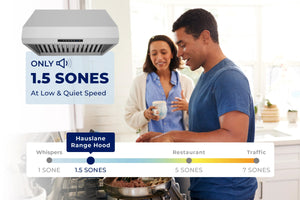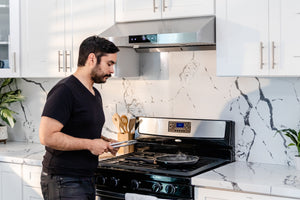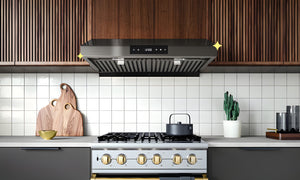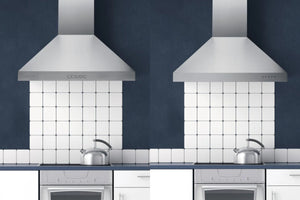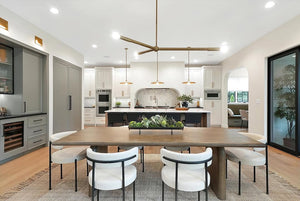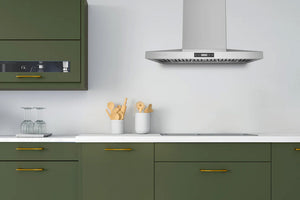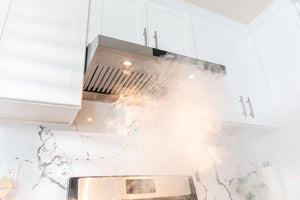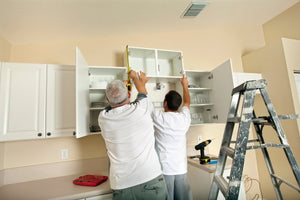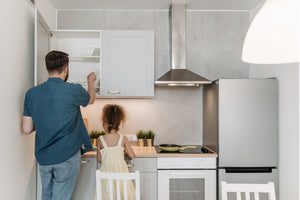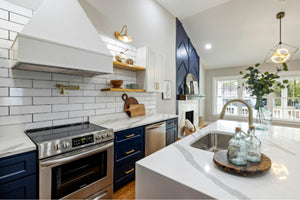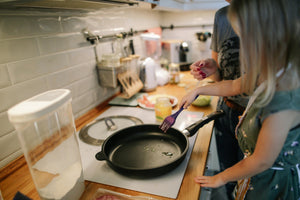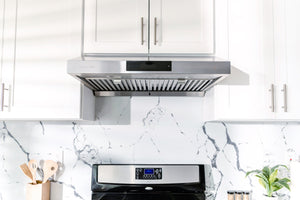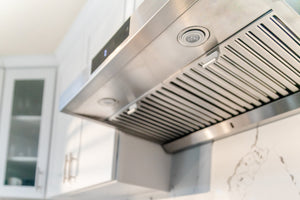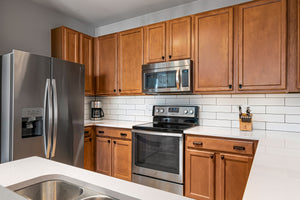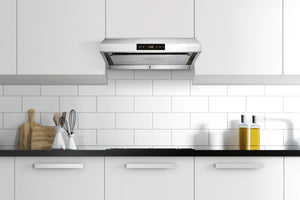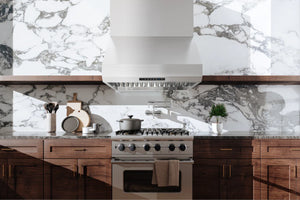TIPS & GUIDES
How to Select the Quietest Range Hood for your Kitchen
By Hauslane ∙ 6 mins readIf you’re in the market for a new range hood, you might be worried about noise. Many of the range hoods of the past were known for creating a lot of sound alongside power. Most modern range hoods for residential kitchens are designed with performance and noise control in mind. Still, there are factors to keep in mind when searching for a range hood that’s both quiet and functional. Let’s take a look at what to look for in your search for a new model.

The Biggest Factors that Affect Noise Control
Range hoods are critical for getting rid of harmful, foul-smelling fumes, smoke, and odors from your kitchen. What makes a vented range hood different from an unvented range hood? Good question.
All range hoods will make some noise. After all, they’re designed for ventilation and need to create enough power to suck out fumes, smoke, and odors. Instead of looking for a silent range hood, look for the following features designed to control and minimize noise:
Variable Speed Controls
We can’t emphasize enough about how important variable speed controls are to anyone who wants a quieter range hood. They’re essential no matter the size or style you choose. You can select the setting that best fits your current cooking scenario. Choose low if you’re warming up leftovers on the stove or steaming up some vegetables.
Making stir fry? Crank it all the way up. You can always turn it back down once all of the fumes are extracted. Generally speaking, three settings should be enough to give you the control you need.
Baffle Filters
Range hoods come with different types of filters such as baffle, charcoal, and mesh to catch grease and debris. If you’re concerned about noise, consider narrowing your search down to range hoods with baffle filters. They tend to be quieter and more efficient overall. As an added bonus, they’re often dishwasher-safe which makes for easier cleaning and maintenance.
No matter which type of filter you end up going with, be sure to keep them clean and maintained. As grease and gunk build up on filters, the range hood will have to work harder and produce more noise.
Ducted vs. Ductless
The only caveat here applies if you’re looking for a ductless range hood. These models use charcoal filters to neutralize odors and air. Ductless range hoods are louder in general because they require more power to work. The exhaust fan in ducted range hoods is located farther away from the stove, which makes for a quieter experience. Installing range hoods with larger ducts will also make things less noisy.
Noise Ratings
As you compare range hood models, check out the noise ratings. Most manufacturers will include a noise rating based on sones. Sones are a measurement of sound. For a frame of reference, a quiet, slightly humming refrigerator rates at about one sone. Range hoods typically operate at six to 10 sones. Here are some other examples of sone ratings:
✦ Two sones: a quiet office or another professional environment
✦ Three sones: a TV playing at a comfortable volume
✦ Four sones: a typical conversation between two people
✦ Five sones: a louder, more active conversation
✦ Six sones: a quieter restaurant setting
✦ Seven sones: light traffic
✦ Eight sones: the average sound of traffic
✦ Nine to ten sones: congested traffic sound
Choosing a range hood at the lower end of the sones scale will help you avoid excess noise. Range hoods at six or seven sones operate at approximately 65 decibels. Most manufacturers list sones at the maximum control setting. So, if you purchase a range hood rated at six sones, it will be quieter on its lowest setting. Additional factors such as installation, type of ducts, and motor size also affect the noise level.
Installation and Placement
Where you choose to install your range hood will also affect how quiet your range hood is. Range hoods should be as wide as or slightly wider than your cooktop. So, if you have a 36-in wide cooktop, you'll want a range hood that’s at least 36 inches wide. If you’re installing the range hood over an island, you’ll want to make sure the range hood extends three to six enough beyond your cooktop on each side. As for height, make sure the model is mounted 24-30 inches over your range.
It’s also a good idea to check the screws on the blower within the model. They may have not been tightened properly during installation or have come loose over time. Simply tightening them back up can reduce any rattling or shaking noises.
These factors are important because they allow the range hood to properly exhaust and ventilate. Otherwise, it will have to work harder to extract fumes and make more noise in the process.




